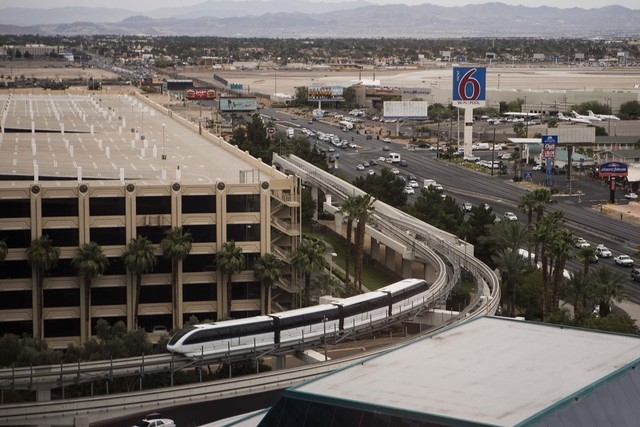Panel: Time to invest in Vegas transportation

It was clear from the tone of some of the questions and answers in a panel at Wednesday’s Las Vegas Global Economic Alliance breakfast meeting that Southern Nevada’s transportation issues are on track to get more political.
Although the moderator and three panelists in a transportation discussion agreed the region should invest in local transportation infrastructure as the economy rebounds, they were less committal about two big local transportation issues — the fate of the Las Vegas Monorail and how to address the potential arrival of Uber and similar ride-sharing technologies.
There may be no answers to the tough questions or the easy ones until the middle of 2015 as the Regional Transportation Commission awaits the completion of the so-called Transportation Business Investment Plan, a $2.7 million undertaking by Michael Gallis, principal of Charlotte, N.C.-based Michael Gallis &Associates.
Gallis won the contract earlier this year to develop the plan and in May said it would take 12 to 18 months to complete the study, which will outline the best ideas to improve economic development through better transportation management.
The transportation element is a focal point of the proposed Las Vegas Global Business District, a $2.5 billion makeover for the Las Vegas Convention Center. Representatives of the taxi industry, limousine, bus and shuttle companies, the Las Vegas Monorail, McCarran International Airport, the Las Vegas Metro Chamber of Commerce and the University of Nevada, Las Vegas, have offered their perspectives of the best way to use smart transportation to build the economy.
That could mean introducing light rail to the valley, modifying or adding to the monorail route and exploring new concepts such as Uber’s ride-sharing app.
Panelists took cautious stances on sensitive topics. Global Business Alliance CEO Tom Skancke said the monorail system’s route could be reconfigured and focused on transporting thousands of Strip employees to their work places from portals on the Strip’s north and south ends.
Skancke, who emphasized that his comments were his and not his organization’s, added that a link to the airport could be a part of that transition, but everything is on hold until the Gallis transportation study is completed.
Regional Transportation Commission Engineering Director David Swallow said Uber and other ride-sharing companies are popular with millennials and that local taxi and limousine companies have begun efforts to bring similar smartphone applications to state transportation regulators for consideration.
“The thing about people today is that they’re connected,” Swallow said. “One of the things you’re looking at is getting away from the old model and moving on from having to stand and wait for a bus and instead, scheduling a ride, knowing when it’s going to get there and tracking it in real time.”
Critics within the taxi industry say ride-sharing companies are underinsured and haven’t had their vehicles inspected, charges Uber officials have denied.
Some transportation observers have said the taxi industry effectively blocks Uber’s entrance to the market with its powerful lobbying arm. Also, there are efforts by Integrity Vehicle Solutions, a technology spinoff of Frias Transportation Management, to present its own app, called Ride Genie, to the Nevada Transportation Authority on Friday.
Contact reporter Richard N. Velotta at rvelotta@reviewjournal.com or 702-477-3893. Follow him on Twitter @RickVelotta.